Copywriting for Landing Pages Series
Part 1: Do these things before you write giveaway copy.
Part 2: How to tell a story with great headlines and an amazing call to action.
Part 3: Writing killer copy for giveaway landing pages.
This is part 3 of a 4 part series that shares the best copywriting advice we’ve ever written. Part 1 talked about doing the proper research with some general rules. Part 2 got really practical with specific rules, guidance and examples. Part three will tackle the special case of copywriting for contest pages.
Ok – Let’s get into it!
What are contest pages?
Contest pages are landing pages that are designed to get people to first enter and then promote a contest to their friends. Your goal is to grow your email list in a fun and engaging way for your audience. This is something KickoffLabs specializes in. Here are three popular types of contest pages we make easy at KickoffLabs:
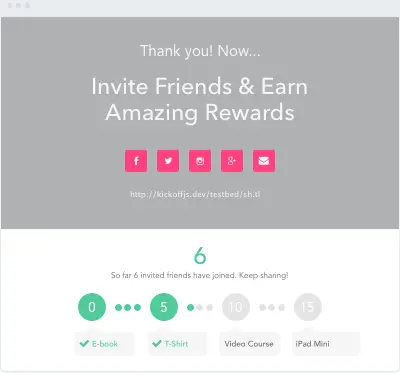
Unlock rewards with referrals.
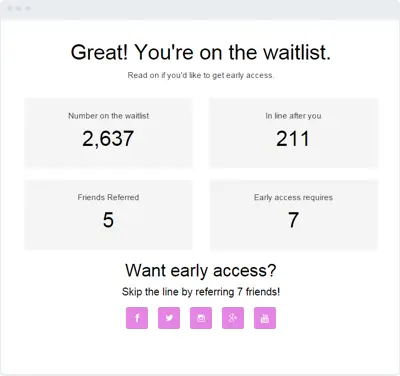
Get on the waitlist for early access.
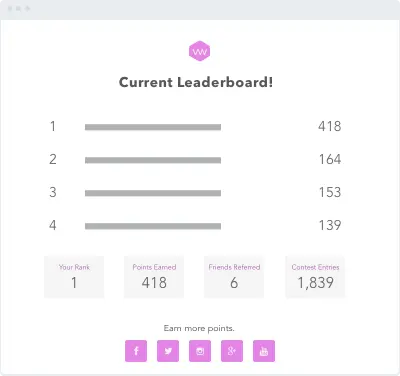
A leaderboard that tracks sharing!
In general you need to think about entering the contest and sharing the contest separately. The motivation for each step is different and having separate pages helps you clearly describe to your visitors and leads why they should take each step. We’ll also separate product launch contests from more general contest pages meant for growing existing lists.
We won’t get too deep into specific contest mechanics here. We’ll focus on copywriting for contests. We’ve published a lot of great posts on contest mechanics in the past you can check out here:
- Tips for running a great contest.
- How to use a dedicated landing page to attract contest entries.
- Find your true audience with a contest.
- 7 Ingredients for a viral contest.
- 6 Reasons you need to run a viral contest!
- Grow your brand with a refer a friend contest.
For each of the page types below all of the copywriting guidance from parts 1 and 2 of this series apply, but we’ll add some specific rules here.
Product Launch Contest Entry Pages
If you are launching a new product there’s no better way to build excitement for potential customers than getting them engaged in a contest that pushes them to invite other, like-minded, individuals to be new customers.
Never lead with “Coming Soon” in your copy
This mistake happens all the time. What big, bold, “coming soon” text does is tell the visitors. “Oh. There’s nothing here for me to do. I guess I’ll see what crazy uncle Donald posted on Facebook now”…. And you’ve just lost another potential customer.
You DO want them to stick around, learn more, and signup in advance for what you’ll be selling. So lead with that rather than “Coming Soon!”. It’s OK to work in the fact the product isn’t released yet, but perhaps into the incentive. For example. You might want to say the following in the call to action.
“Join our list now for early bird discounts when we launch in October!”
What that does is let the reader know they can’t buy anything today, it’s coming soon, but that there is a reason to sign up today.
Don’t do this!
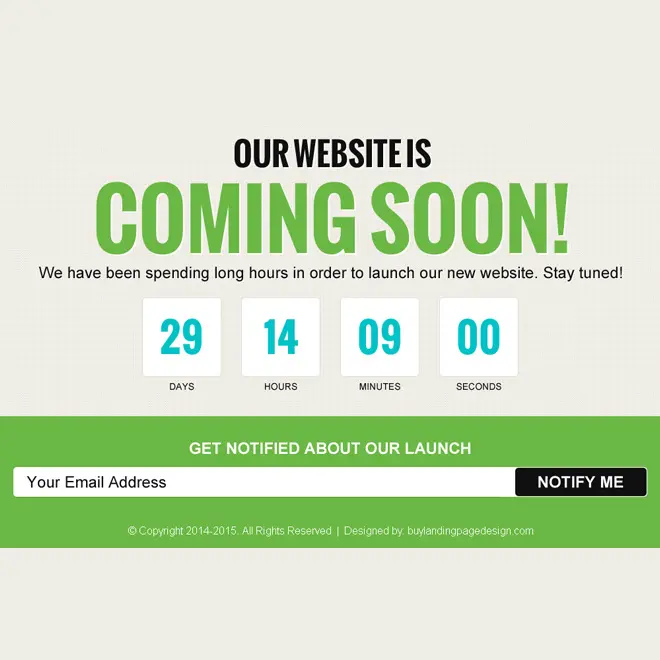
Why would anyone sign up?
Don’t ask for much. Email and maybe a first name.
That’s it. Unless you really need marketing data that you’ll use like “What type of phone do you use”. I generally advise people, however, to leverage the follow-up emails for real surveys and discussions with customers. Keep the job of your launch page focussed. Here is a great simple launch contest signup page:
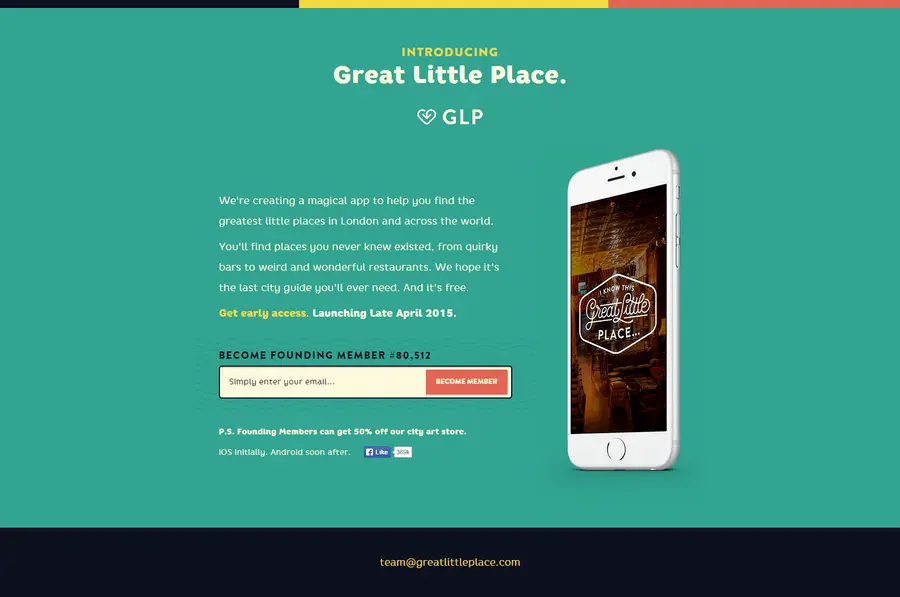
Add a Brand Logo For Trust
If you have a logo… use it. When pages just start off with text it really feels like I’m going to be duped. Spend a few dollars on a logo. You can always refine it later. Minimally pick a nice font for the name of your company or product that you use at the top of the page to add this trust element.
“Be the first to know” is a terrible incentive and strategy in general.
I see a lot of pages that tout “You’ll be the first to know! We’ll email you when we launch.” as incentive to sign up for their amazing startup. Here’s the thing:
- Why does it matter that I’d be first?
- Isn’t everyone that signs up going to be “first” as well.
- If you really just ignore people that sign up until you launch they will have forgotten about you. I see a lot of launch emails and say to myself “Wow – I don’t even remember signing up for that… delete.
Instead you need to answer “Why?” they should care about being first. Will they get an early bird discount? Is availability limited? Do they get to reserve a username? Are you doing something special for the first 1,000 people that no one else gets?
Answer those questions for your potential customers and you’ll have a much better incentive. Don’t do this:
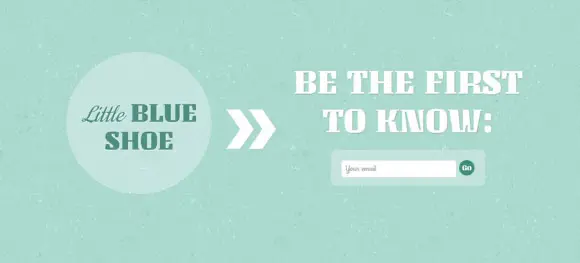
Don’t be mysterious.
I know it’s tempting to put up a “teaser” page that doesn’t tell anyone anything about the product you are going to unleash on the world. I repeated this advice here and in the last two parts because of how important it is.
You may even get a higher percentage initial conversions rate for “mystery” products. The problem is that all these leads are people who just want to know what it is rather than knowing they’d like to eventually buy it. It won’t help in the end. Just be honest and direct about what you’ll be selling.
Look at this example and do the opposite:
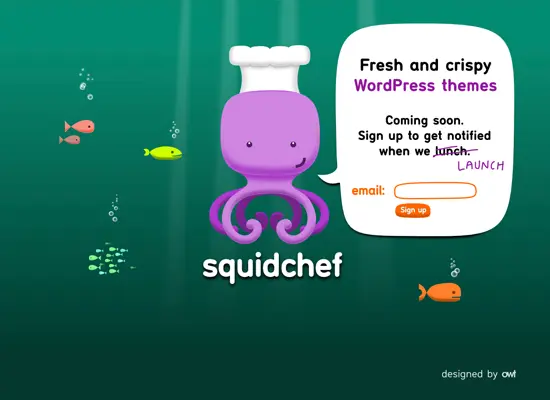
Just enough information to close
On the other end of the spectrum are people that believe long form landing pages are the hammer for every nail. They aren’t. You just need to explain clearly what will be offered and why someone should sign up.
The more copy you have the more you need to maintain and the harder it becomes to A/B test your conversion rate. We talked more about the “what” and “why” statements in the last parts of this series.
Here is a great example that follows this rule… although NOT some of the ones above:
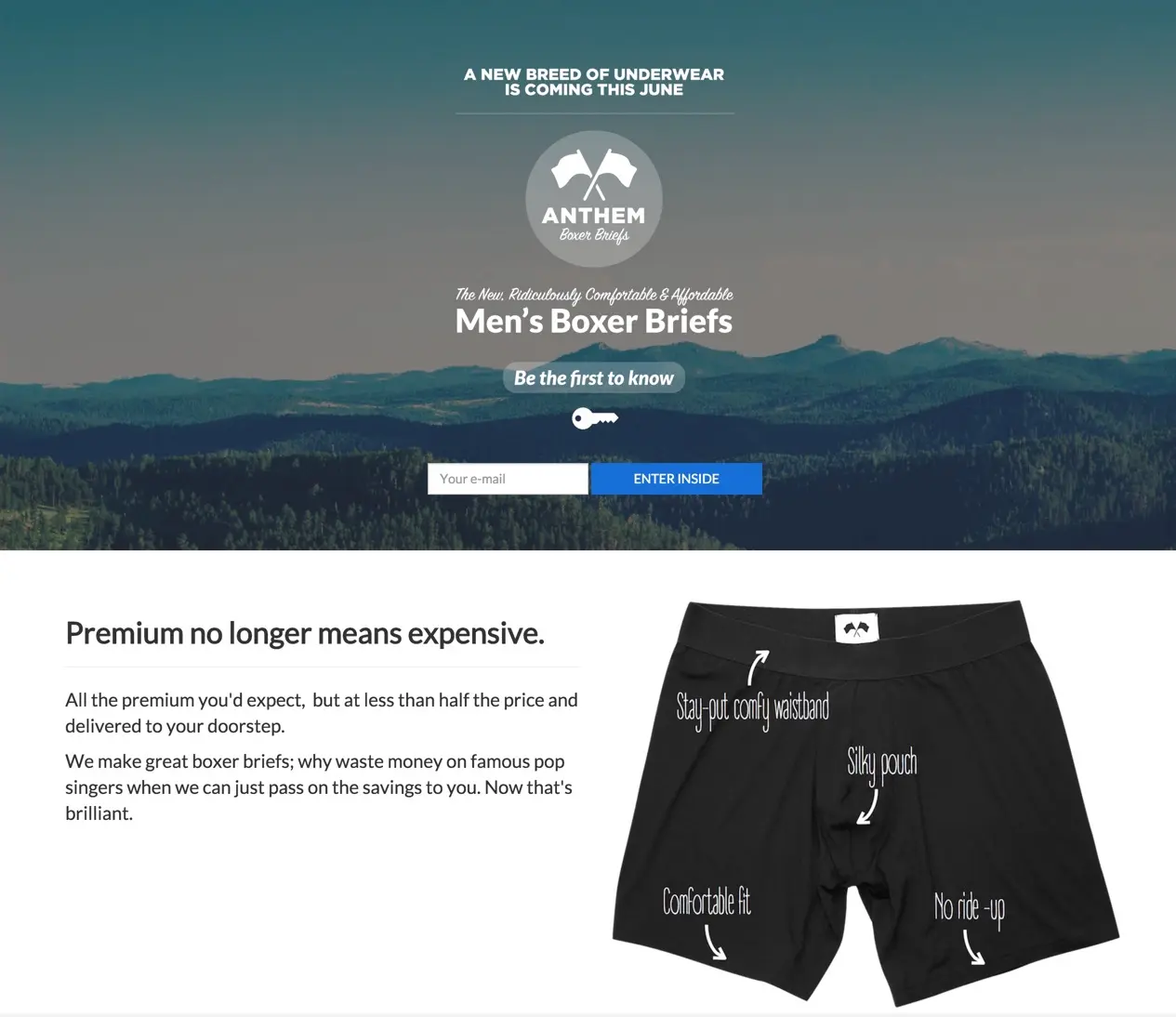
General Contest Entry Pages
A lot of KickoffLabs customers are simply looking to grow their existing email lists. In this case you are simply running a standard refer a friend or enter to win style contest. What sort of additional copywriting advice do you have to offer in that case?
“Join our newsletter!” is NOT an incentive!
I’ve never once been browsing the internet and said to myself. “Where in the world do I sign up for this company’s newsletter?”
You may send awesome content on a weekly basis that’s worth reading, but no one is going to believe that enough up front to sign up for that reason.
You should be reaching out to people that sign up on a regular basis throughout your contest to keep engagement high, but you should have something else in mind in the call to action designed to incite action.
Countdown when it means something
Adding a countdown timer lets the visitor know that they have limited time to take action. I don’t generally recommend having one, however, when you are 6 months out from the end date. Just list the date somewhere. Then, when you get within the last month, add a countdown timer.
A date that’s just too far out screams “No need to do anything yet… I wonder if uncle Donald posted some more racist crap online.” and you’ve just lost another potential customer.
Contest Sharing Pages
The meat of any viral contest is the page that encourages people to share. They will see this page after they enter your contest and the goals of these pages include:
- Thank the participant for signing up.
- Deliver any bonus they received for signing up.
- Get them to tell their friends about your promotion.
- Outline your contest promotion and incentives for sharing.
- Make any rules or requirements clear.
Our goal, at KickoffLabs, is to make it easy for you to get a Viral Boost on all of your campaigns. A “Viral Boost” is simply the boost of additional leads you get through word of mouth promotion of your contest.
On average, if a basic email form gets 100 leads a virally boosted one would get 135 leads for the same amount of effort. And we’ve easily seen that number be more like 45 to 55% more leads with contests that follow these rules.
With that in mind I’ll go over the things I look out for on these viral boost contest pages based on the following example:
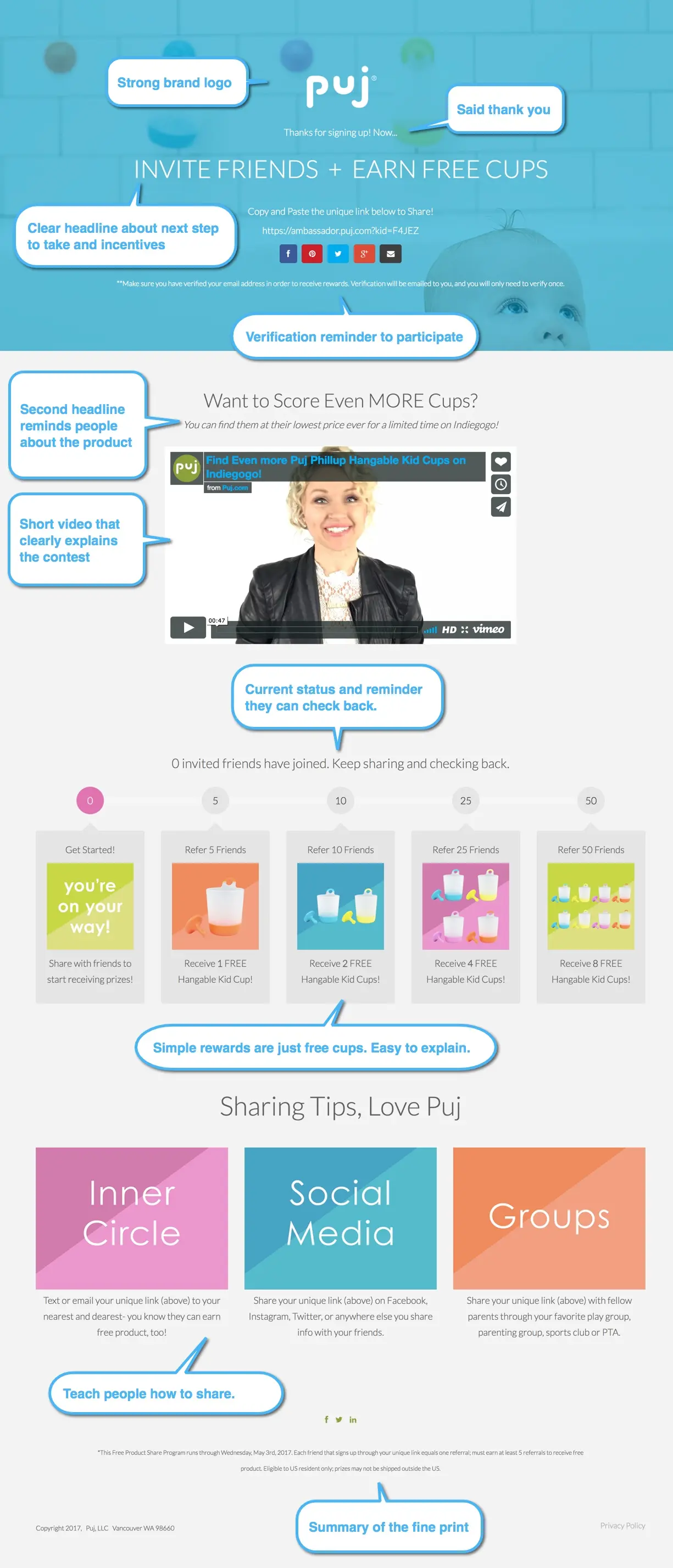
Branding and voice match the signup page.
The pages should feel and sounds like they are from the same company. This means:
- If you used a logo on the signup page it should be prevalent there.
- Any brand colors and imagery should be the same or at least similar in style.
- If you used humor of your entry page this page should carry that feeling through.
Say thanks.
Don’t forget to give your lead warm and fuzzy feelings for having taken the first step towards getting to know your story more. It doesn’t have to be complicated. A simple
“Wow – Thanks for signing up!”
Deliver the goods or explain how to get them.
If your signup page promised a digital download or a discount code you should make it clear how they will get that. It could be as simple as including it with your thank you line:
“Thanks for getting onboard! Here is your download”
Or even
“Thanks for signing up! Check your email to receive your discount.”
And have the autoresponder send it.
This way you have space left for everything else.
What about verification requirements?
Larger contests will want to turn on an email verification step to avoid fraudulent entries. But if you do so you’ll want to tell people that they need to complete one more step. This too, could be really simple and worked into the thanks copy.
“Thanks! Please check your email to verify and receive your discount code.”
Setup the contest & sharing
Your headlines on the first page were focussed on your product or the promotion, but the headlines here need to setup the contest and make it obvious what someone needs to do to share, earn rewards, and qualify. My advice is generally:
- Simplify the rewards where possible. Don’t offer 5 totally different rewards for sharing. It needs to be easy to explain.
- Keep the rewards “on brand”… meaning don’t just give cash away or people promoting your contest won’t care about you.
Remember that people share things online for one of two reasons:
- It makes them look cool because they found something awesome.
- They are incentivized for doing so.
The combination of A and B will result in the largest Viral Boost. Here are some example contest page headlines.
“Earn free X by sharing with your friends! It’s simple. Just use the buttons below. “
“Want a discount on X? Tell a few friends and we’ll hook you up!”
“Get exclusive early bird discounts on X by telling a few friends!”
These headlines all clearly state what’s in it for the reader, how they get it, and remind them what the product is.
Setup social sharing that makes sense.
If you are selling a B2B product or service then having a linked-in sharing option makes sense while Instagram may not. B2C? Maybe focus on Facebook, Twitter, and Email sharing.
Don’t forget copy on the share buttons.
Depending on the social network there is a chance to setup some pre-filled copy that will be shared on the leads wall. Each network is a little different.
For twitter you get a chance, with KickoffLabs, to write the tweet for them. In this tweet you should mention your own brand for some additional exposure and help them highlight your product. For example:
“Can’t wait for X from @companyhandle to launch. Want one free? Click this link!”
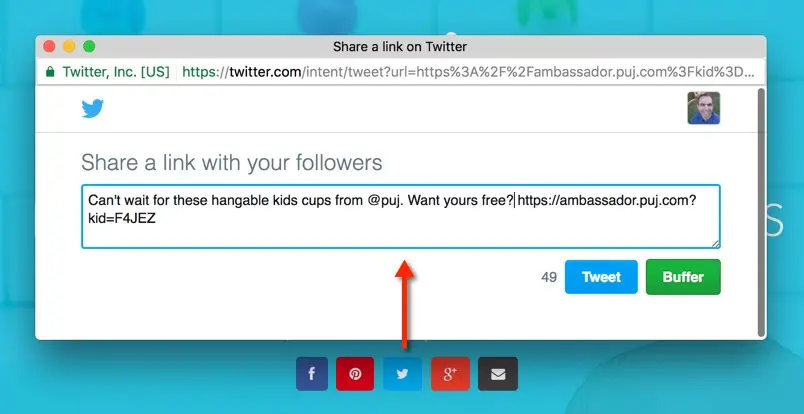
Check each of these buttons on your sharing page!
For Facebook you need to setup the share image, headline, and description on the signup page. In this case you’ll be writing from your perspective. So keep the copy focused on the product or contest.
Simplify rewards by focussing on one product, a percent discount, or just one goal.
I’ve seen, all too often, a company selling one type of product, but offering 5 different rewards. It make the proposition hard to understand. It works best if the contest incentives are easy to explain.
My favorite new contest template, from KickoffLabs, is the “One Goal” template.
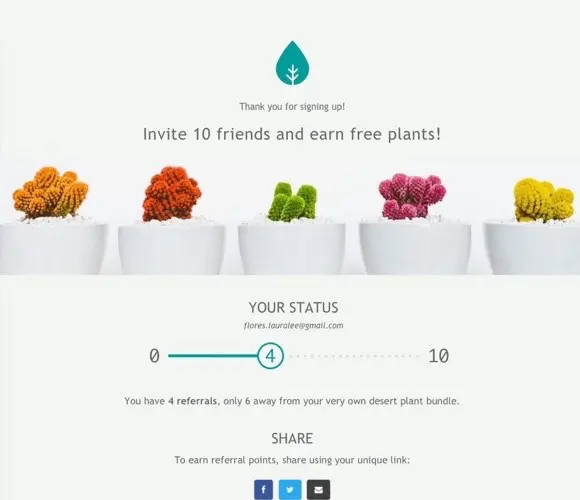
Here you are making it dead simple to show “Get 5 referrals and will give you Y”. Nothing complicated or difficult to explain. Just one simple goal for people.
Another way to do it is by offering discounts that lead up to free product for a few people.
Let people know where they stand.
The thank you page should make it clear where they stand. Are they ranked in the top10? Do they have 3 referrals, but need 5? It’s best to just be up front about this so they can check back any time.
The fine print.
Your state, country, or company legal team may have certain rules that have to be spelled out as part of the contest. I recommend having a summary of these rules directly on the contest page while linking to a more detailed landing page that has the full rules. Within this summary suggest the following.
“In order to participate you must verify your own email address. Only verified and valid email addresses will count towards the points you earn in this contest through referrals. You can bookmark this page to check your status at any time. Click here for complete rules and details. “
Where the last sentence leads towards the real fine print.
The TLDR Version
It’s a lot. I know. So I summarize here.
- Never focus on “Coming Soon” for a launch contest.
- Keep all contest pages “on brand” with your company’s voice, logo, colors, and images.
- Come up with a good incentive for everyone to participate.
- Don’t be mysterious. Just be clear about the value of the product or contest.
- A countdown means nothing if it’s 6 months out.
- Setup copy for all your social sharing and test it out.
- Keep the rewards simple so they are easy to explain.
- Clearly explain why and how someone can earn more points in your contest.
- Summarize the fine print.